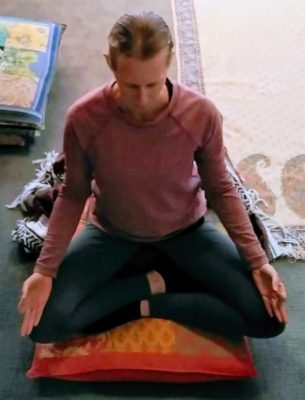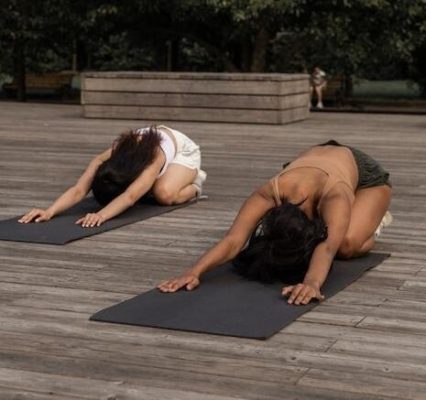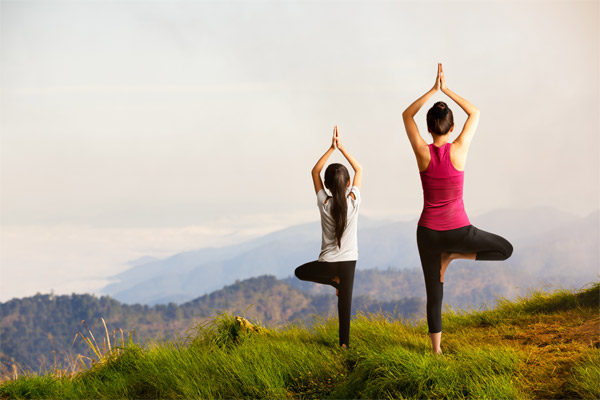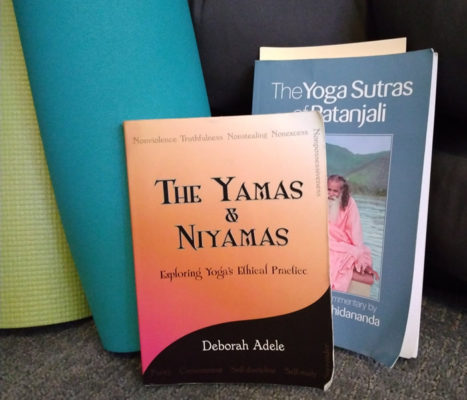Traditionally, Yoga is a spiritual path with a goal of Self-Realization. Modern Yoga has taken parts of this ancient practice to focus on physical and mental wellbeing. While this is a wonderful benefit of Yoga, it reduces Yoga to the practice of tools and techniques and misses a huge part of what Yoga can ultimately offer. A wonderful way to start taking Yoga off the mat and into a lifestyle and spiritual practice is with the ethical principles – the Yamas and Niyamas. I introduced the Yamas in my last post, so now we’ll journey into the Niyamas – Lifestyle practices to turn inward.
The Niyamas are often translated as ‘observances’ or ‘dos.’ These 5 principles guide us towards living a more inward life, cultivating inner awareness and increasing self-understanding.
Purity

Photo from Unsplash
The first Niyama is Saucha or purity. The focus is a daily routine that purifies our bodies and our minds so that we can connect more to spirit. You may have heard of the Panchkosha (5 sheath/layer) model if you’ve attended one of my workshops. This model peels back the layers we are made up of from gross to subtle. The grossest level of our being is the physical sheath or anandamaya kosha. The most subtle layer is annamaya kosha or bliss body. Putting things into the body that are healthy and more pure, exercising regularly, keeping up daily hygiene, and taking care of the body overall, this is a gross level of saucha. Taking care of the physical sheath positively influences all the other layers.
The third sheath or manomaya kosha is our thoughts and emotional sheath. By cultivating self-awareness, one can be aware of thoughts that are coming up that lead to emotional reactions. When negative thinking comes up, each of us has a choice (if we’re aware) to continue feeding that negative thought and emotional reaction, or cultivate the opposite. Over time, this practice alone, called pratipaksha bhavana, can be empowering. As the saying goes – change your thoughts to change your world. These are practices of purifying the mind, which then positively affect the other 4 koshas.
What is one behavior you could change to practice purity towards your body? Your mental state?
Contentment
The second Niyama is Santosha or contentment. I love that contentment is an ethical principle in Patanjali’s Ashtanga Yoga ‘prescription’ towards Self-Realization. Being content where we’re at, with what we have, and with what is going on in life is so simple, yet profoundly challenging. Most of us have been taught that we must keep striving and performing to validate our worth. Santosha encourages us to be content with the life we’ve been given, that we are already enough.
This doesn’t mean we shouldn’t keep exploring and experiencing life. It means just doing it from a place of curiosity and love versus one of fear and “not enough.” What would it take for you to be content with how things are right at this moment? What if nothing else really changed in your life…could you be content with how things are right now? Gratitude is a wonderful practice of contentment.
Self-Discipline

Photo from Pexel
The third Niyama is Tapas or self-discipline. Tapas literally means ‘to burn’ or ‘heat.’ This Niyama invites us to stand in our commitment to our practices, our values, and our moral compass no matter what life brings. Being able to stay focused in the ‘heat of life’ allows us to burn away patterns that no longer serve us.
When people tell me, “But it’s so hard to do,” I agree with them. I remind them that no one said living a spiritual life, making conscious change towards our more authentic self, is supposed to be easy. But, it’s hard staying stuck too, so it’s our choice what ‘hard’ we want to live. I know I personally want to keep making those conscious changes because I spend more and more time feeling content and peaceful taking that path. What do you choose? It is a choice.
A practice of tapas is to commit to doing one thing differently for a month. Then, no matter what is going on, you do it, each day. Excuses may come up. Face them and do the new behavior anyway. Really, there are no excuses that matter more than our commitment to ourselves and our spiritual development. And, yes, it will be hard sometimes. Accept this.
Self-Study
The fourth Niyama is Svadhaya or self-study. Traditionally, this self-study means studying spiritual scriptures, taking those concepts to experiment with in your daily life and studying what happens for you. So, it’s taking age-old wisdom and exploring it yourself to find the truth.
I’ve had many clients who are on the path to sobriety fall back to using a substance. We use this as a form of svadhaya, looking at what happens and what happens when they are sober. By exploring themselves, instead of ‘beating themselves up, I’ve seen many people realize they actually like who they are without substance use. They develop internal motivation to choose themselves instead of the substance.

Photo by Author
Svadhaya shows us that there’s an internal world far more fascinating than the external world. This principle shows that Yoga is actually a scientific path. One that invites us to get curious in digging deeper and deeper into discovering the essence of who we truly are, regardless of what’s happening in the external world. I have found that the longer I practice Yoga, the more internal my focus becomes, the quieter I become, and the more I enjoy time with myself.
Studying the Yamas and Niyamas along with Patanjali Yoga Sutras is a form of svadhaya. If you’re interested in diving deeper into traditional Yoga, then join me for the next 8-week Yamas and Niyamas Sangha.
Surrender and Let Go
The fifth Niyama is Isvara Pranidhana or surrender to God/divine/pure consciousness or the interconnection to everything. As human beings, our mind and body’s most basic job is to keep us safe and alive. Many of our reactions come back to this basic survival, though many times it’s unnecessary. Rarely do we face life or death situations. But a deadline, a promise, or something you think you ‘should’ do can elevate to urgency, sending our mind and body into survival mode. We are trying to control things we have no control over.

Photo by Monstera at Pexels
I caught myself doing this recently when I saw the weather for an upcoming backpacking trip. We would be above the tree line for most of our hike. There were thunderstorms forecasted early and lasting many hours. Since I’ve been practicing accepting and surrendering to things as they are, I met my worry with some deep breaths. I came up with some alternative hikes and reminded myself that weather can change. A couple of days later when we started, the weather had changed in a positive direction so we went ahead with the original plans. Worse case, we would have done a different hike. It ended up being all good and there was no need to excessively worry about the weather, which I can’t control.
The pandemic offered a direct lesson in surrender. We are used to planning and those plans working out. Well, nature offered up a global learning that what we take as ‘set in stone,’ really isn’t. Plan, let go and see what happens. Adapt as needed. Trust things will work out as they should without the need to control an outcome.
Surrender in Our Daily Roles
Many of our daily roles offer plenty of practice to surrender and let go of control. No other role allows this more than parenting. Parenting is wrapped up in deep love for your child and many fears. When a child is a baby, yes, they completely depend on you to keep them safe. Then, they become a toddler and start to realize they are separate from you. They need help with many things, yet they have already started the journey of autonomy. Children come into this world for their own life journey and if the role of parent becomes wrapped up in fear instead of love, it’s easy to try to control a child’s journey, instead of supporting and nurturing it.

Photo from Pexels
If you’re a parent, is there one area in this role that you find yourself trying to ‘fix’ or control that keeps you feeling frustrated, exasperated, angry? Where are you struggling to let things unfold in your child’s life journey? What are you trying to control that you have no control over? Where does your child need to face life lessons so they can be ready to go out on their own when they become an adult?
If you’re not a parent, what role in your life do you find yourself feeling frustrated, exasperated, angry? Where are you struggling to let things unfold in life? What are you trying to control that you have no control over?
Lifestyle Guides for Stability
Surrendering to life as it is isn’t easy. In fact, it can be terrifying, like jumping off a cliff. Most times, when people let go, there may be a charge of emotion that moves through the body and then a sense of calm and relaxation. They’ve survived and actually feel better. It’s like the most satisfying exhale you’ve ever taken.

Photo by Author
These 5 Niyamas are guides that turn our awareness inwards, cultivate self-understanding and help develop a more positive relationship with ourselves. They are principles to be used over a lifetime, not just a one-off introduction. Having the Yamas and Niyamas as practices in life help to root and ground us when the ups and downs of life happen. Like a healthy tree, the Yamas and Niyamas are the roots that stabilize. This allows us to bend and move with life in grace, living with integrity and clarity.
If you are feeling lost or in need of grounding, consider joining the next 8-week Yamas and Niyamas Sangha with me. Starts October 5th. All the details are here.
Namaste.
